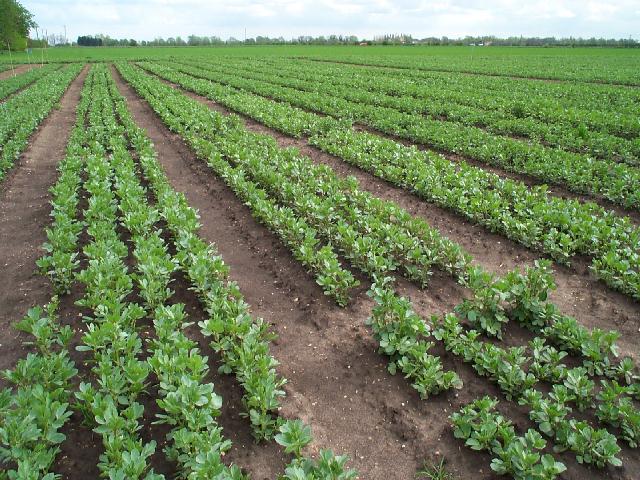Cultivation method
Which establishment method is best ?
There are several ways of establishing winter bean crops.
Ploughing in
This is the traditional method, sometimes beans go in relatively late in the autumn when soil conditions are often less than ideal and soil moisture levels are high. Ploughing in is often the only option with high soil moisture, however it is not the ideal particularly as beans normally follow winter wheat in the rotation, chopped straw ploughed down with the beans is the cause of many problems, forming an anaerobic layer in the soil. The alternative of baling the straw all too often causes soil compaction. Dependent on soil moisture content and soil type, ploughing may be coupled with furrow pressing which will provide a more level surface for spraying and harvesting. Post drilling cultivation can be used to level seedbeds, providing soil structure damage is not caused. Crops however can be established by running the beans over the ground and then following on with the plough, they will withstand depths of 15-20cm on heavy soil and up to 26cm deep on the lighter free draining soil types. It is important to level the seed bed though as it can cause difficulties at harvest if left unworked.
Drilling
A more precise method and optimum establishment is achieved by deep drilling, following good ploughing. Some cereal drills are not capable of achieving the optimum of 5 inches (12.5cm) and . It is important to place the seed at the optimum depth and above any layer of straw. However it is a less weatherproof system than the plough. There is the risk that rain following ploughing, may make the soil too wet to drill.
Min-till
A method which has become more popular in recent years. Single pass machines offer opportunity to sow beans at good depths enabling a different weed control regime using cheaper widespread herbicides. It is important that the coulters used cover the seed over as it is not desirable to leave open slits leaving the bean seed exposed to the elements.
Min-till and direct drilling systems are the most suitable for beans and the majority of UK farmers establish bean crops this way. Preference varies from farm to farm, but optimum establishment is achieved by deep drilling, with seed being covered by a minimum of 3cm of soil, but can be sown as deep as 15-20cm when ploughed in.
The late autumn drilling date of winter beans means that soil conditions are often less than ideal. Where soil moisture is too high for drilling and/or the soil structure is poor, winter beans can be ploughed in instead of drilling, allowing any soil structure damage to be rectified in the process. Beans are sensitive to surface soil compaction and deep loosening of the soil profile has been shown to increase yields. However, seed distribution and subsequent seedling emergence can be uneven when ploughed in, thus the density of crops may not attain the plant density for optimum yields.
Drilling Date
The aim is to get well-established plants at the 1-2 node stage, or two pairs of leaves, before the winter sets in. While this is normally achieved by sowing mid-October to early November, there is flexibility with sowing date. Modern winter bean varieties can still be sown throughout December and January and into February.

